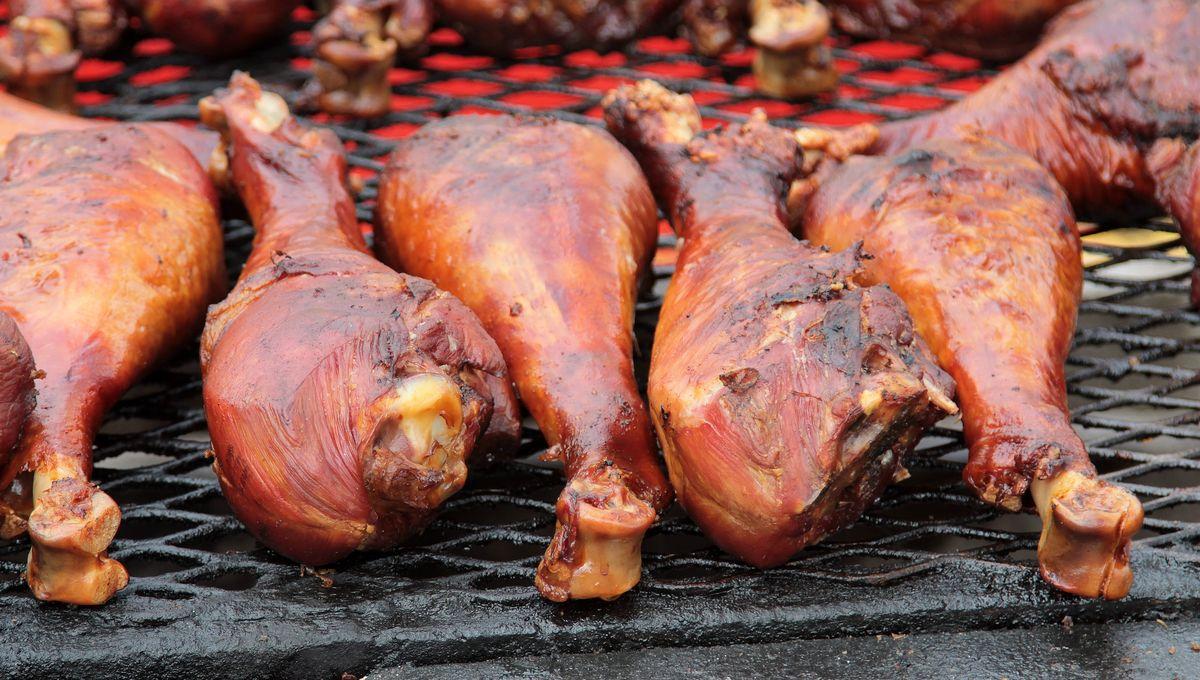-
Ροή Δημοσιεύσεων
- ΑΝΑΚΆΛΥΨΕ
-
Σελίδες
-
Blogs
-
Forum
Could We Eat Dinosaur Meat? (And What Would It Taste Like?)

What Would Dinosaur Meat Taste Like? (And Could We Safely Eat It?)
It could be said that we still live in an age of dinosaurs. After all, birds are dinosaurs, but they’re not the only close relatives we have to look to as analogs for extinct dinosaurs.
The rest of this article is behind a paywall. Please sign in or subscribe to access the full content. Dinosaurs, birds, and crocodiles all sit within the Archosauria, a clade of “ruling reptiles” made up from diapsids with single openings on each side of the skull just in front of the eyes. This is why phylogenetic bracketing often borrows inspiration from birds and crocodiles to make decisions about how dinosaurs might have looked and sounded, but what if we wielded it for something less noble? What if, really, we just want to know what dinosaurs would have tasted like? (For mammoths, we don’t have to wonder). One person who’s had a lot of experience helping to piece together dinosaur behavior and anatomy is Professor Steve Brusatte, palaeontologist, author, and advisor to the Jurassic World movies. As you can imagine, it was with some trepidation that I got in touch to ask what he thought about eating the core focus of his life’s work, but to my relief he was ready to commit to the bit. “I'm sure that dinosaur meat would have been edible, and depending on the species, probably quite delicious,” he said. “Maybe a dinosaur here or there might have been toxic, or have had particularly foul flesh, but by and large, in the modern world, we humans can eat lots of different animals, so I have no reason to think we couldn't have eaten dinosaurs. And we probably would have enjoyed it.” The tastiest animals today are often herbivores that bulk feed grasses or leaves, so I suspect that a Brontosaurus or Triceratops or Stegosaurus [...] might have been particularly tasty. Professor Steve Brusatte In modern times birds and crocodilians are regularly eaten for their meat, and there are only handful of examples where it could be dangerous. One example includes the hooded pitohui from New Guinea, one of Earth’s poisonous birds. Hooded pitohuis have a steroidal alkaloid neurotoxin spread across their feathers. The poison is potent enough that even handling the birds can bring about symptoms. “It can cause at first the tingling, the numbing sensation,” explained researcher and bird expert Jack Dumbacher in a video for the California Academy of Sciences. “In higher doses, it can lead to paralysis, cardiac arrest, and death. Gram for gram, it’s one of the most toxic natural substances known.” So, how does a bird get its feathers on such a powerful substance? It all comes down to diet, as you see pitohuis eat a poison-carrying beetle that lives in New Guinea. When the birds eat the beetles, the neurotoxin accumulates in their tissues in a way that isn’t toxic to the bird, but it does affect their reptilian predators and may even prevent them from eating their eggs. The beetle is Choresine pulchra, also known as the toxic “nanisani” beetle, which is the same menu item that makes the blue-capped ifrit, Ifrita kowaldi, poisonous. Studies have suggested that the Choresine beetles are potentially a direct source of batrachotoxins for New Guinea birds, which is the same way the infamous poison-dart frog gets its toxicity. Poisonous birds aren’t limited to the passerine, either. In fact, it may alarm you to learn that the world’s largest wild goose is also poisonous. That’s something we learned from our pals over at How Many Geese, a comedy nature podcast that finally asks what we’ve all been wondering about wild animals: how many could you take in a fight? So, if we safely managed to avoid eating the dinosaurs whose diets could potentially cause their tissues to be similarly poisonous, what would dinosaur meat taste like? I’m afraid it’s bad news if you were hoping to enjoy some T. rex twizzlers (but if a handbag would do, boy do we have news for you). “The tastiest animals today are often herbivores that bulk feed grasses or leaves, so I suspect that a Brontosaurus or Triceratops or Stegosaurus – all plant-eating dinosaurs – might have been particularly tasty,” said Brusatte, “but a predator like T. rex or Velociraptor? Probably pretty nasty.” Stegosaurus steaks it is, and if you’d like to open up the menu items, here’s what happened when scientists ate 50,000-year-old bison in a stew.Could you eat dinosaur meat?
Modern-day dinosaurs and poisonous birds
What would dinosaur meat taste like?


